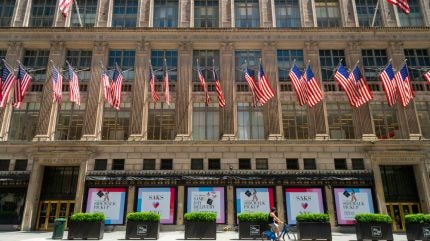
It’s been a busy month for US department stores with investment firm HBC announcing a definitive agreement to acquire Neiman Marcus Group (NMG), which will bring Saks Fifth Avenue, Neiman Marcus and Bergdorf Goodman into one company called Saks Global.
Meanwhile, reports suggest the trio’s main rival, Macy’s, is busy contemplating a second upped buyout offer from investment firm Arkhouse Management Co LP (Arkhouse) and its investment manager partner Brigade Capital Management (Brigade).
According to the National Retail Federation Macy’s was the highest ranking US department store in its top 100 retailers list for 2023 sitting in 22nd place and generating $24.36bn in worldwide retail sales in 2022.
In contrast, the highest ranking out of Saks Global’s new group was Neiman Marcus with $5.24bn in global retail sales in 2022 and it sat in 91st place out of 100.
Of course, the new trio together will be a bigger force to be reckoned with against the likes of Macy’s, but from a consumer perspective not much will change as HBC’s new Saks Global company has confirmed operations will continue under the three respective brands.
What will fewer US department store players mean for apparel?
Behind the scenes however, the acquisition is expected to impact how apparel brands work with US department stores moving forward.
How well do you really know your competitors?
Access the most comprehensive Company Profiles on the market, powered by GlobalData. Save hours of research. Gain competitive edge.

Thank you!
Your download email will arrive shortly
Not ready to buy yet? Download a free sample
We are confident about the unique quality of our Company Profiles. However, we want you to make the most beneficial decision for your business, so we offer a free sample that you can download by submitting the below form
By GlobalDataGlobalData retail analyst Neil Saunders explains: “For those reliant on department stores to distribute product it means there will be fewer doors which necessitates a need to find alternative channels to reach customers.”
Similarly, he shares that apparel brands may cut the assortments available to wholesale if the number of distribution points falls and becomes unsustainable.
Fewer selling points and lower volumes could also impact economies of scale, and ultimately push up prices.
Crucially, he asserts: “For some brands, the volumes may not be worth the effort – that said, we are still a long way from that point and while in decline, department stores still generate a lot of sales.”
US department stores face ongoing decline
It’s important to note department stores have been in decline for a long time. Even a GlobalData report published seven years ago was titled ‘Department stores decline in use’, however the company highlighted at the time the top two reasons for the decline was in department stores’ own control: Poor store environments and lack of interesting products.
Fast forward to 2024 and the disappearance of more department stores will not have a huge impact on the apparel sector: “It is something most brands and manufacturers will take in their stride,” says Saunders.
He believes the decline of department stores is on account of them becoming less relevant to consumers, stating: “Most shoppers want focused shopping experiences with good product curation,” but right now many department stores are not delivering on this.
He also maintains that today’s consumers have a lot of choice, so the failure of department stores to innovate makes it is easy for them to stop shopping with them.
Impact of Macy’s agreeing to upped buyout offer
Macy’s in particular has been on the sharp edge of the department store decline with its FY 2023 and Q4 results showing a fall in sales and revenue.
Shortly after publishing the results its CEO Tony Spring unveiled a new strategic initiative that included the closure of 150 “underproductive” stores, modernising its end-to-end operations and strengthening the Macy’s nameplate with the hope to “return Macy’s to enterprise growth.”
Macy’s rocky financials did not deter investors Arkhouse and Brigade from submitting an initial buyout offer in December 2023 and an increased one in March 2024.
Saunders tells Just Style that if the activist investors were to grab control of Macy’s, it will still operate as a department store chain.
However, he continues: “Behind the scenes there would be a lot of focus on real estate rather than on retail.”
He suggests this would “ultimately weaken” Macy’s and over time it would lead to “further decline” and the likely closure of more stores.
However, he maintains that in the near-term the chain would not disappear or be rebranded.
Department stores versus direct-to-consumer for apparel brands
For apparel brands there is still a general preference for direct-to-consumer, explains Saunders as it is seen as higher margin and as giving them more control over things like the selling environment and customer service.
However, it’s not the end for department stores yet with Saunders stating they will remain an important channel in the years ahead.
He concludes: “As Nike’s stumbles have shown, even powerful brands need to partner with third parties to increase reach. Department stores also allow brands to reach demographics they might struggle to find on their own, so there is a point to partnering with them.”



